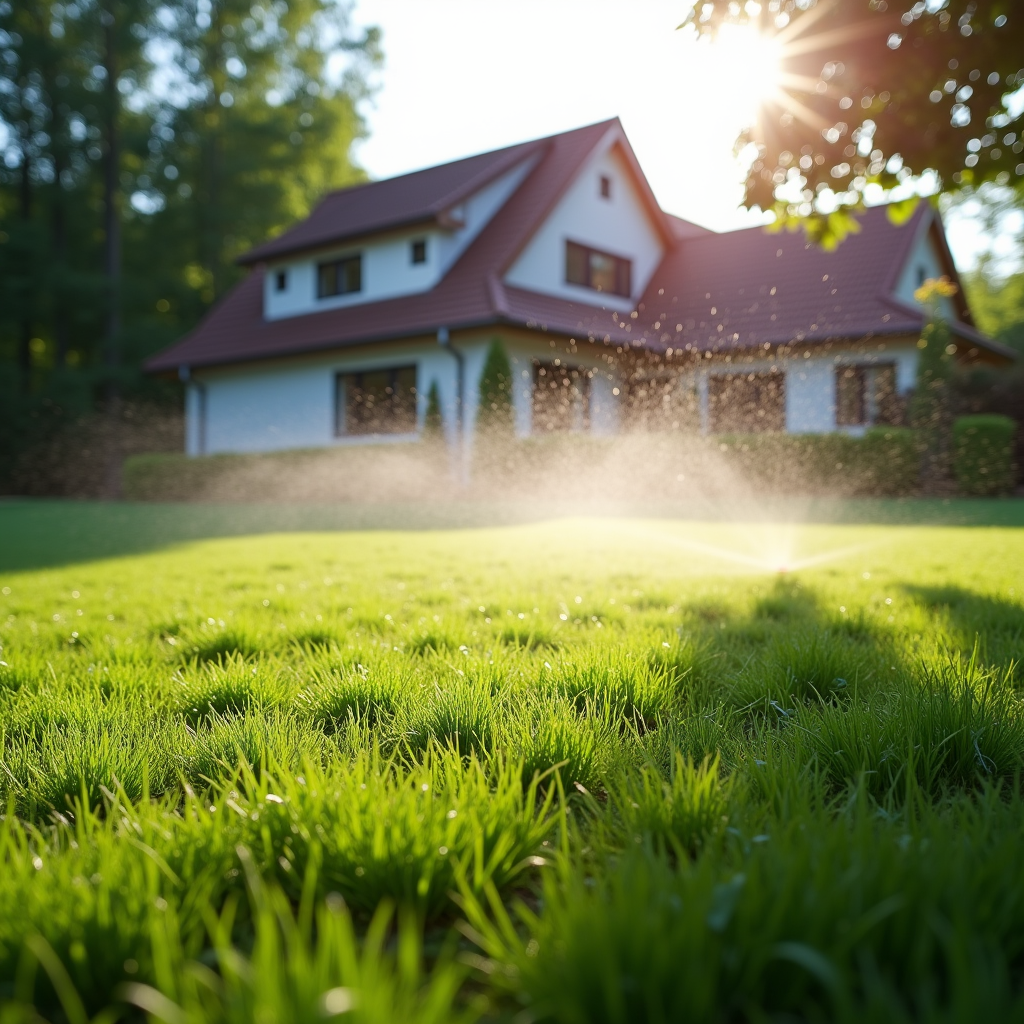Introduction
Coastal areas are often seen as idyllic, picturesque locations that boast stunning views and a mild climate. These regions attract homeowners and businesses alike, eager to design landscapes that enhance the beauty of their surroundings. However, with this allure come significant challenges. From salt-laden air to shifting sands and heavy storms, landscaping in coastal areas requires specialized knowledge and innovative solutions. In this article, we'll delve into the various landscaping challenges in coastal areas and effective solutions to tackle them head-on.
Landscaping Challenges in Coastal Areas
When people think about coastal landscapes, they often imagine palm trees swaying in the breeze, vibrant flowers blooming against a backdrop of shimmering seas, and lush greenery thriving under the sun. Yet, behind this enchanting façade lies a plethora of unique challenges that landscape designers must address.
Salt Tolerance: The Unforgiving Element
One of the most significant issues faced by those designing landscapes near the coast is salt tolerance. Salt from seawater can harm many plants, causing leaf burn or even death.

Understanding Salinity Levels
- Coastal plants must withstand varying salinity levels. Some species thrive in saline environments while others do not.
Choosing the Right Plants
- Opt for native species such as beach grasses or saltbush. Incorporate drought-resistant plants that can cope with salt spray.
Wind Exposure: Nature's Whirlwind
Coastal areas experience high winds that can wreak havoc on fragile plant life.
The Impact of Wind on Landscapes
- Wind can cause soil erosion. It can bend or break weaker plants.
Designing for Wind Resistance
- Use windbreaks like hedges or fences. Select sturdy plants with low profiles close to the ground.
Soil Erosion: A Constant Battle
Erosion is a persistent issue along coastlines, often exacerbated by human activity and climate change.
Identifying Erosion-Prone Areas
- Look for steep slopes or sandy soils. Assess previous erosion incidents.
Implementing Erosion Control Techniques
Plant deep-rooted vegetation. Utilize geotextiles to stabilize soil. Create terraces or retaining walls for protection.Effective Solutions for Coastal Landscape Design
Having explored some of the major challenges faced when designing landscapes in coastal regions, let's look at effective solutions to these issues.
Native Plant Landscaping: A Sustainable Approach
Utilizing native plants is one of the best ways to address many coastal landscaping challenges effectively. Native plants are already adapted to local climates and conditions, making them more resistant to pests and diseases.

Benefits of Native Plants
- They require less water and maintenance. They promote local biodiversity by attracting native wildlife.
Innovative Irrigation Techniques
In coastal areas where water resources may be scarce or salty, implementing efficient irrigation techniques is crucial for sustaining healthy gardens.
Drip Irrigation Systems
- Target specific root zones with minimal evaporation loss. Reduce water consumption significantly compared to traditional methods.
Rainwater Harvesting
- Capture runoff from roofs using barrels or cisterns. Utilize collected water during dry spells for irrigation purposes.
Creating Windbreaks and Protective Barriers
Establishing windbreaks helps protect delicate flora from harsh winds while also creating microclimates conducive to growth.
Types of Windbreaks
Natural barriers like shrubs and trees Artificial structures such as fencesSoil Improvement Techniques
Improving soil quality plays a pivotal role in combating erosion while enhancing plant health in coastal landscapes.
Organic Amendments
Compost enriches soil structure. Mulch retains moisture while suppressing weeds.Sustainable Practices for Coastal Landscaping
Sustainability should be at the forefront when considering landscape design along coastlines due to environmental changes impacting these areas more significantly than inland properties.
Xeriscaping: Water-Efficient Design
Incorporating xeriscaping principles helps reduce water usage while maintaining beautiful outdoor spaces along coastal zones.
Key Xeriscaping Principles
Efficient irrigation Soil improvement Plant selection focusing on drought-tolerant varietiesStormwater Management Strategies
Managing stormwater effectively reduces runoff pollution entering oceans while protecting natural habitats along coastlines.
Best Practices for Stormwater Management
Permeable paving materials Rain gardens designed to absorb excess precipitationIntegrating Hardscaping Elements Wisely
Hardscaping refers to non-organic materials used in landscaping—think paths, patios, walls—integrating these wisely can help manage erosion and enhance usability without compromising aesthetics.
Landscaping Challenges Specific to Different Coastal Regions
While many challenges are universal across coastlines globally, certain locations may face unique circumstances requiring tailored strategies for effective landscape design:
Tropical Coastlines: High Humidity & Heavy Rainfall
In tropical regions where humidity levels soar alongside substantial rainfall amounts year-round:
Design Considerations
Focus on mildew-resistant plant options Utilize raised garden beds for drainageTemperate Coastlines: Seasonal Changes
In temperate regions experiencing distinct seasonal variations:
Landscape Solutions
Choose perennials adaptable to temperature shifts Implement seasonal planting strategiesFrequently Asked Questions (FAQs)
Q1: What types of plants are best suited for coastal landscaping?
A1: Native species such as beach grasses, sea oats, and various succulents tend to thrive best due to their natural adaptations against salt spray & wind exposure; they also require less maintenance over time!
Q2: How does salt affect landscaping choices?
A2: Salt can damage non-salt tolerant plants leading them towards stunted growth or death; therefore selecting resistant varieties becomes essential when designing landscapes near oceans/bays!
Q3: What is xeriscaping? Is it applicable only in dry climates?
A3: Xeriscaping refers primarily towards designing landscapes focusing on reducing overall water usage through drought-resistant vegetation; though it's most commonly associated with arid conditions—it’s beneficial anywhere including coastal regions facing limited freshwater supplies!
Q4: How can I prevent soil erosion on my property?
A4: Strategies include planting deep-rooted vegetation like ground covers along slopes; installing retaining walls/terraces designed specifically around vulnerable areas; plus utilizing mulch layers which both protect soils & retain moisture!
Q5: Are there any eco-friendly pest control methods suitable for coastal gardens?
A5: Absolutely! Options range from introducing beneficial insects (like ladybugs) into gardens—to utilizing organic sprays made from neem oil/baking soda mixtures providing safe alternatives compared conventional pesticides which could harm surrounding ecosystems!

Q6: What role do hardscapes play within a landscape design?
A6: Hardscapes provide structural elements aiding erosion control while enhancing outdoor functionality (paths/patios) thus complementing softer landscape features creating overall harmony within designs—especially vital when dealing with https://squareblogs.net/duburgkojb/greensboros-best-kept-secrets-unique-landscape-designs unstable sandy soils found along coasts!
Conclusion
Navigating the myriad challenges associated with landscaping in coastal areas requires both creativity and expertise from landscape designers who understand how environmental factors influence plant health and overall sustainability practices employed during planning processes.. By employing effective strategies like using native species tailored irrigation methods promoting biodiversity through sustainable practices—we can successfully create stunning outdoor spaces that withstand nature’s whims while respecting our coastline’s integrity! As we continue evolving towards eco-friendlier approaches towards land management—we must remain vigilant about preserving ecological balance whilst enjoying the beauty these enchanting locations offer us daily!